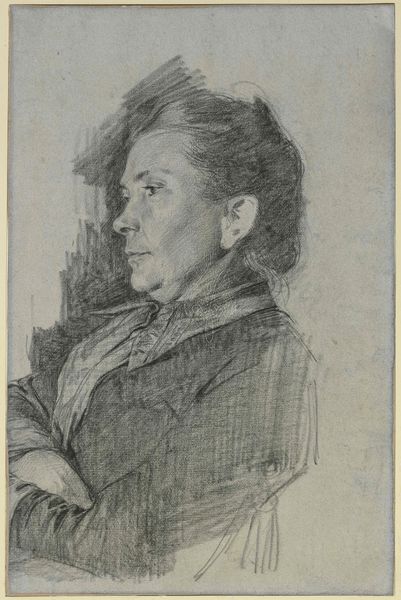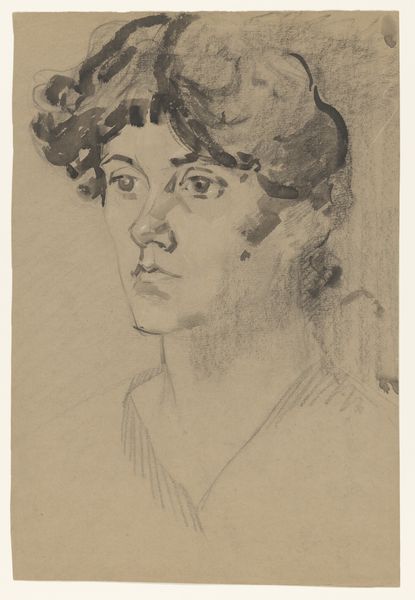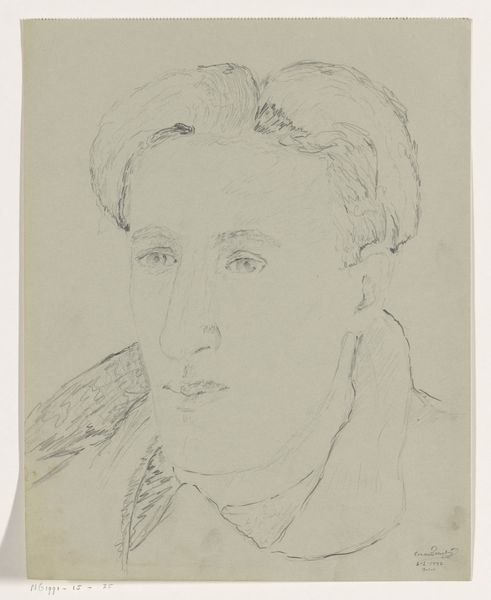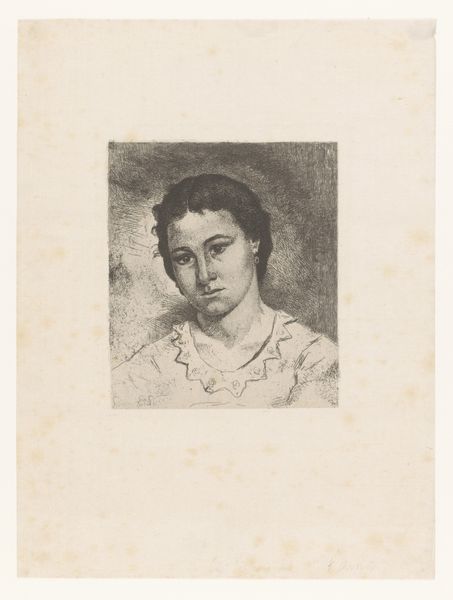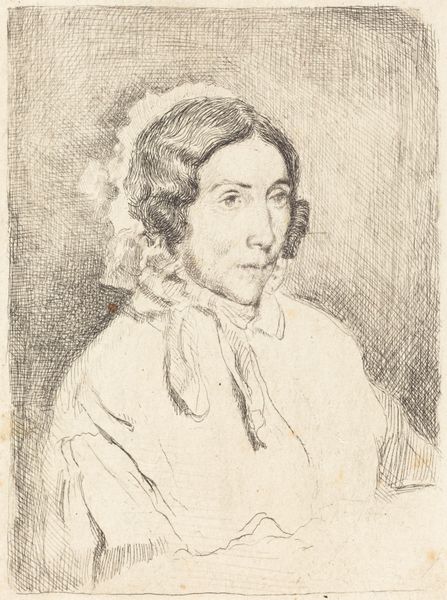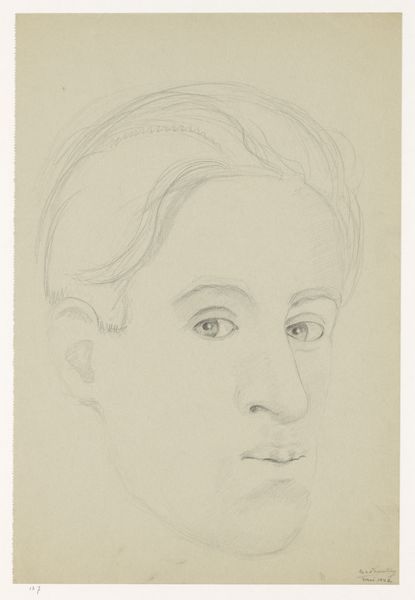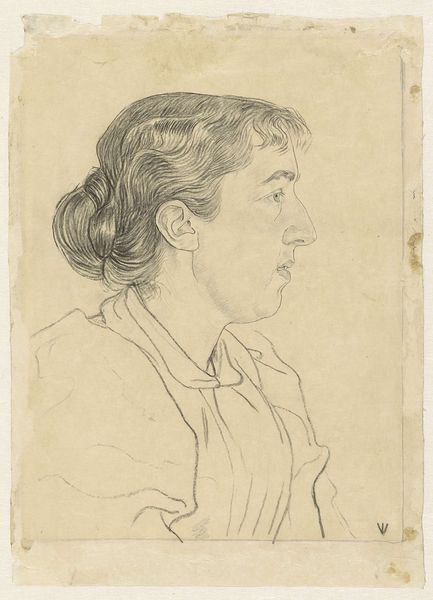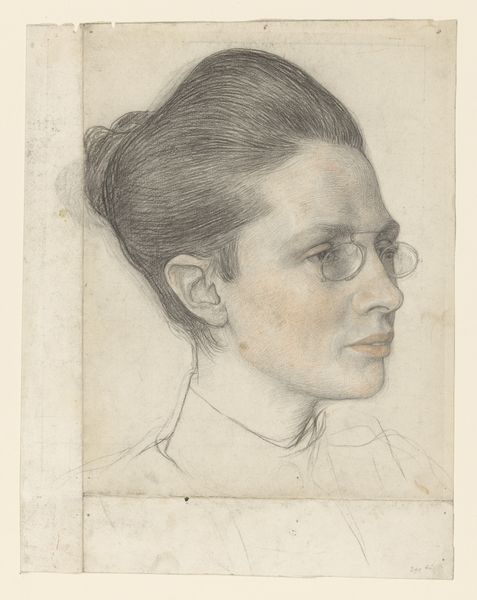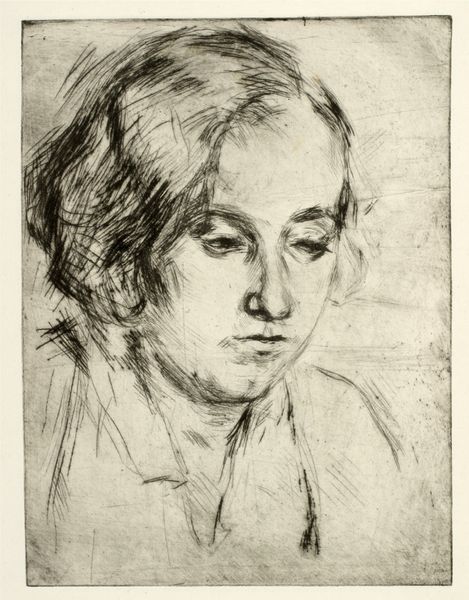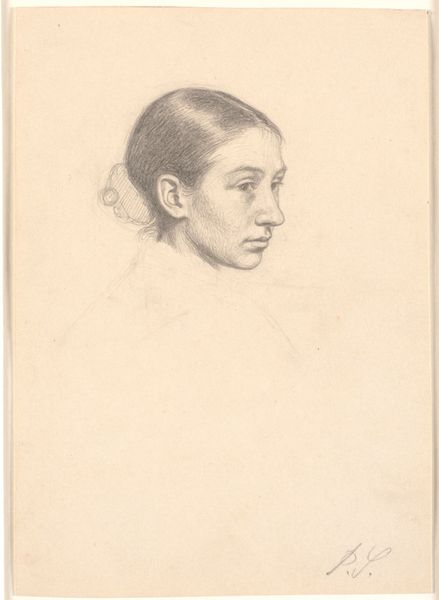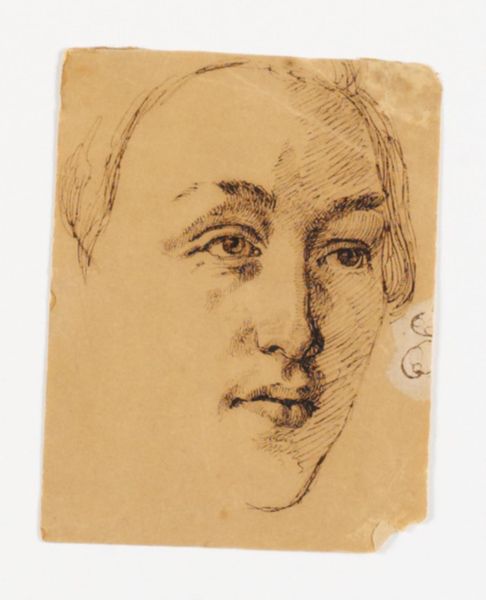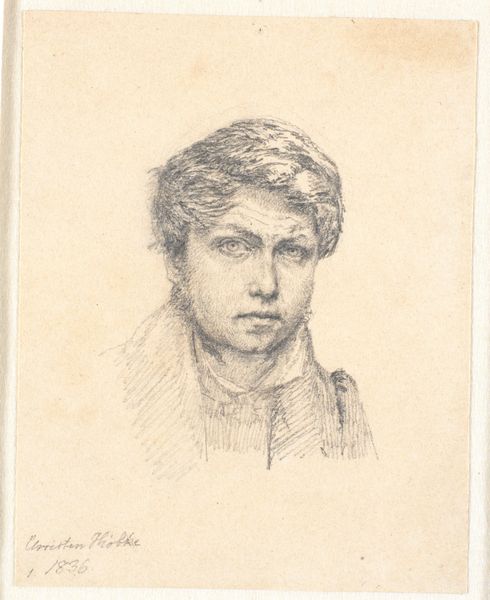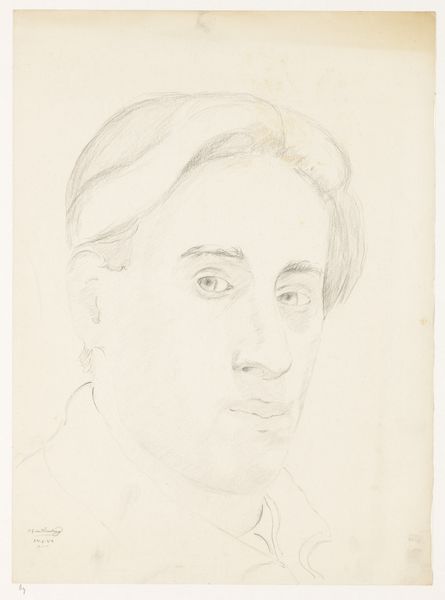
Portrait of the Artist's Student Maisonneuve 1824
0:00
0:00
drawing, print, paper, engraving
#
portrait
#
drawing
# print
#
paper
#
romanticism
#
line
#
portrait drawing
#
engraving
Dimensions: 70 × 85 mm (image); 78 × 85 mm (plate); 178 × 233 mm (sheet)
Copyright: Public Domain
Eugen Eduard Schäffer made this print, “Portrait of the Artist's Student Maisonneuve,” sometime in the 19th century. The image depicts a young man, and the artist’s decision to portray his student in this way speaks to the changing role of art academies in the 1800s. In 19th century Europe, art academies became more focused on teaching technical skill, often requiring students to copy the works of masters and learn anatomy. Here, Schäffer uses the printmaking medium to emphasize the fine lines and detail that were so prized within academic art. Prints were also more accessible than paintings, playing a key role in the democratization of art and knowledge. The decision to create a portrait of a student suggests a shift in the power dynamics between teacher and pupil, and reflects the emphasis on skill acquisition and the importance of the student's development as an artist. Looking at historical records, like academy archives and student portfolios, we can better understand the evolving role of art institutions in shaping artistic practices. It reminds us that the meaning of art is always tied to the social and institutional context in which it is created.
Comments
No comments
Be the first to comment and join the conversation on the ultimate creative platform.
